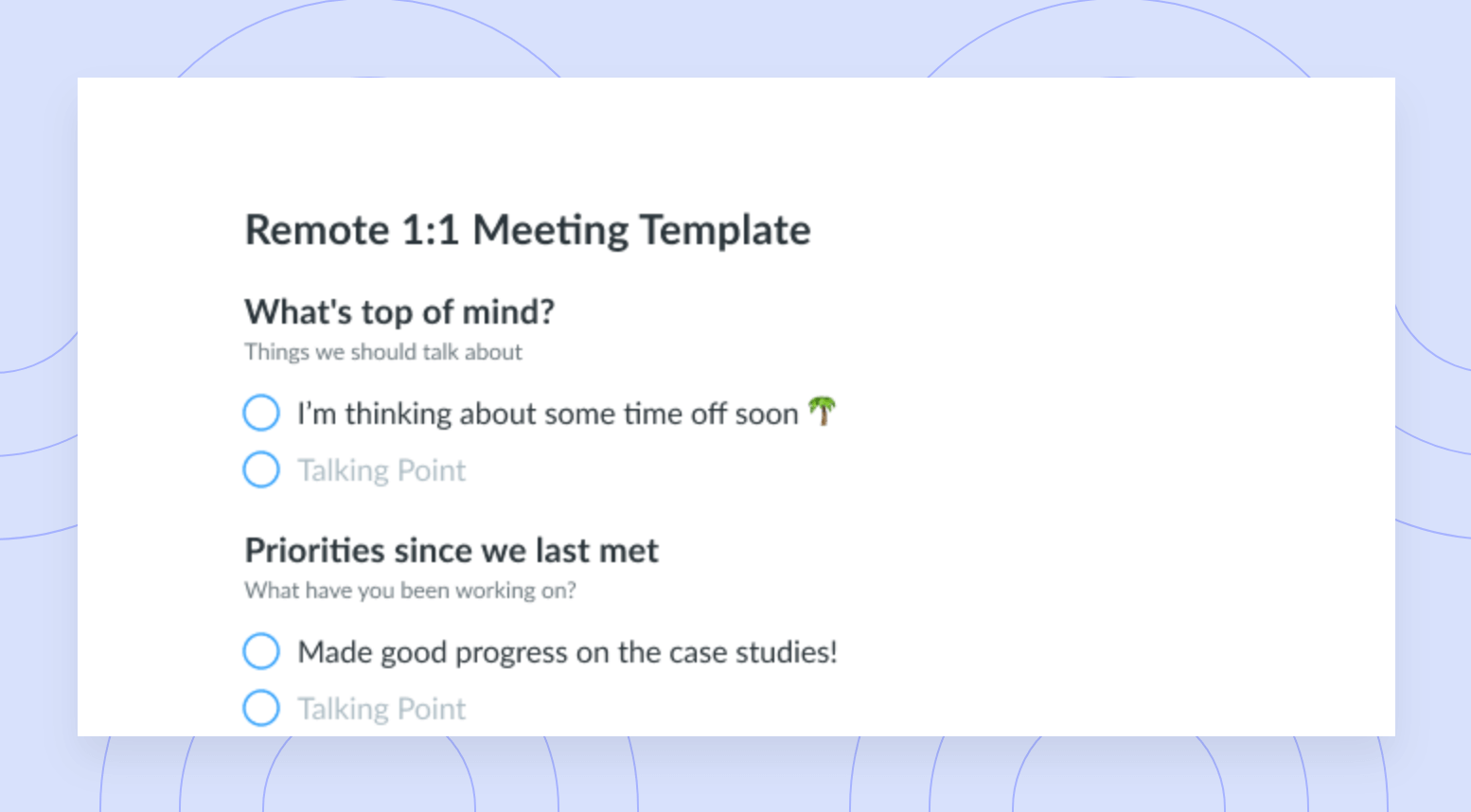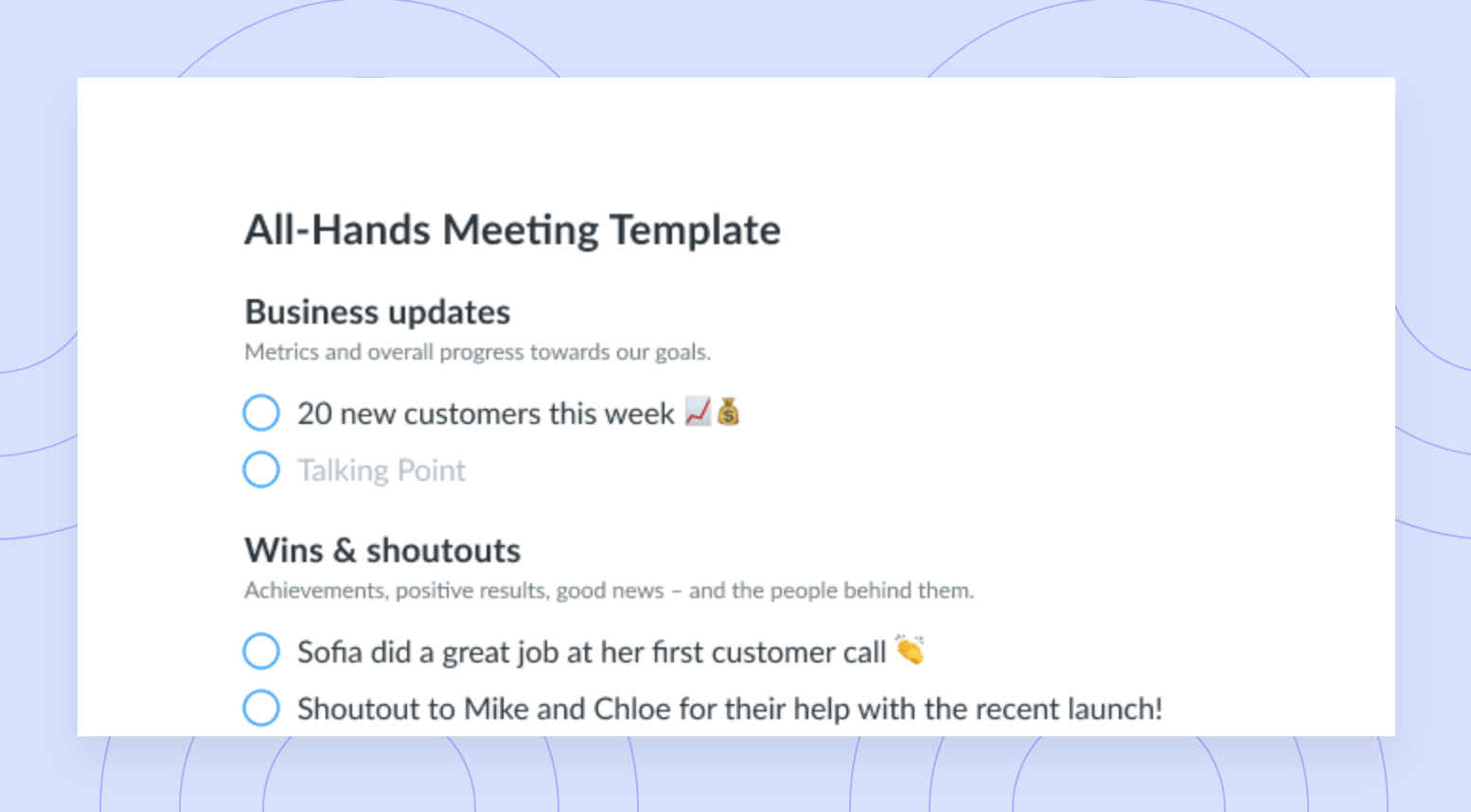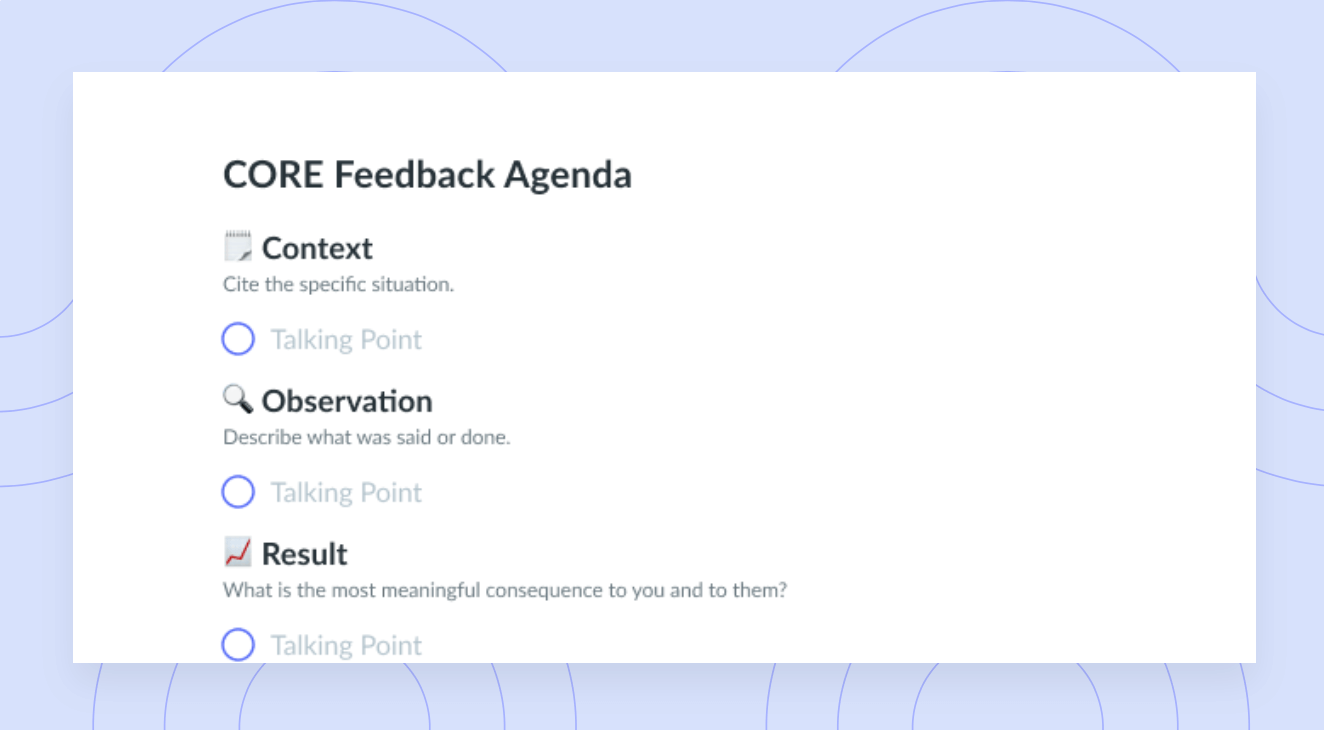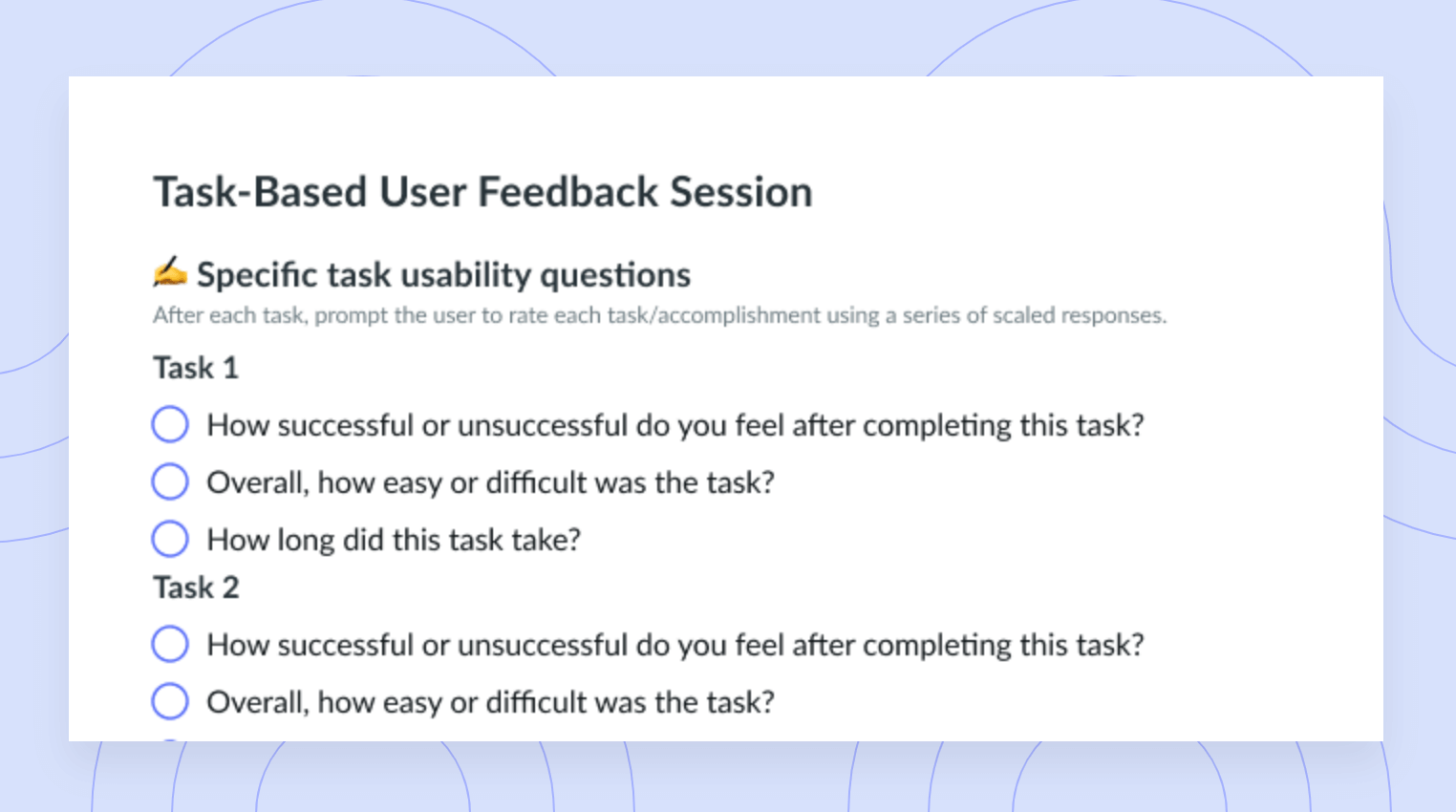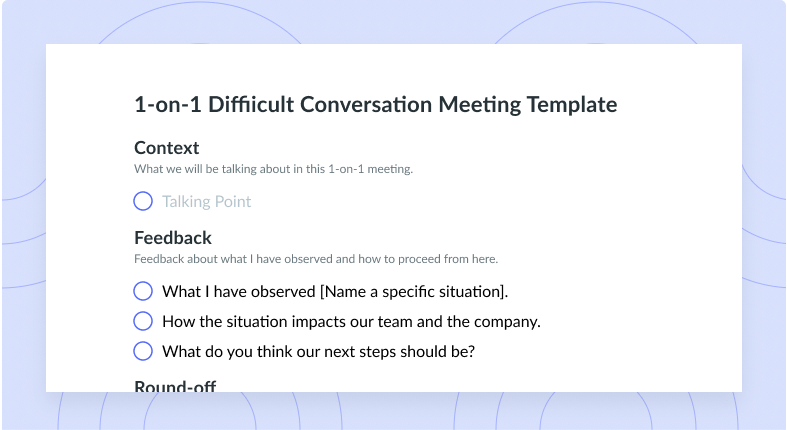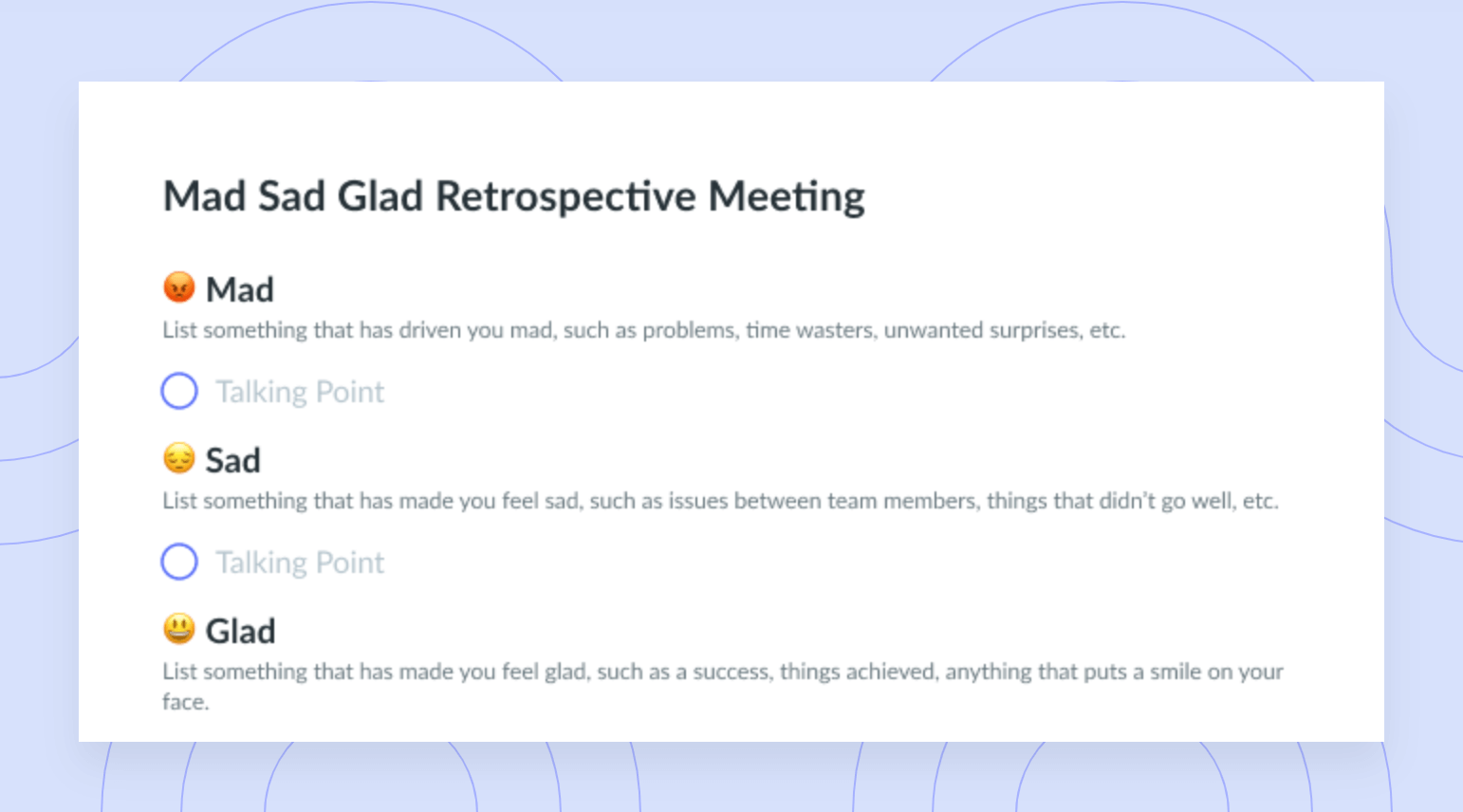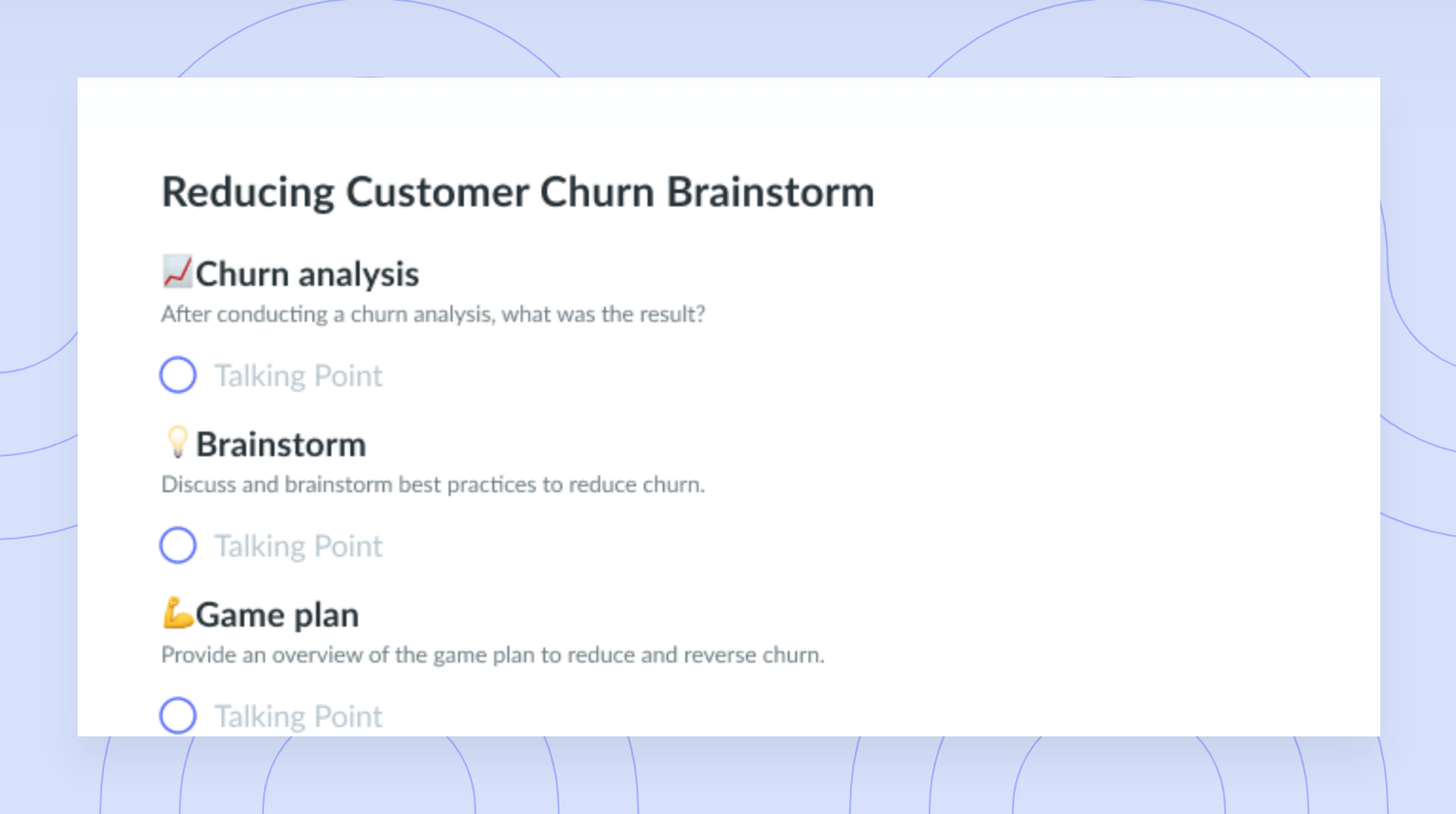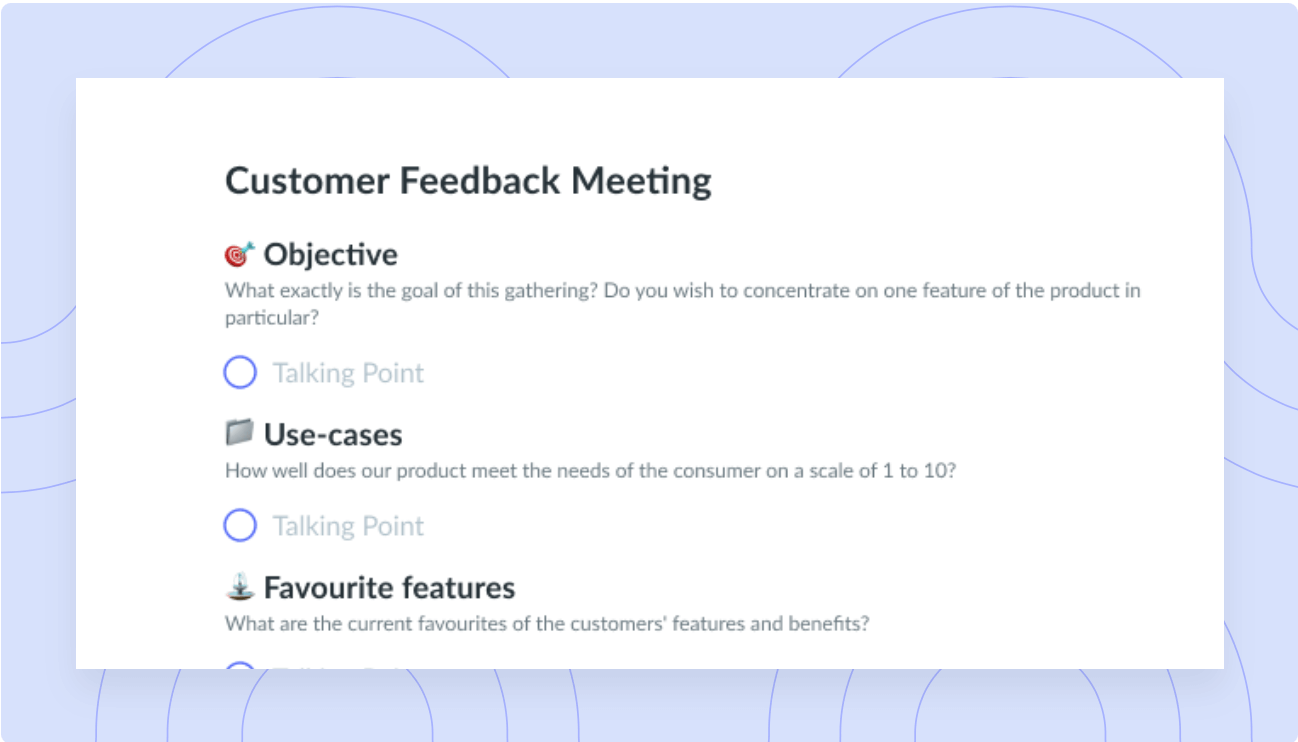How to Facilitate Feedback Meeting: 9 Steps for Leaders in 2024
Giving feedback to employees can be awkward. Follow these steps to go into these discussions feeling ready to inform and inspire your team members.
Organizing a feedback meeting can feel really awkward for the manager and employee involved. When team members see that their manager has requested a meeting to give some feedback, hearts start to pound and the sweating begins… Constructive feedback is especially daunting to deliver because you know that team members are going to be nervous and you want to ensure you deliver the information in the best and most amicable way possible. While it’s really important for employees to understand how to receive feedback, it’s equally important for leaders to know how to deliver it. The best way to do so is to create a culture of continuous feedback, but not without some structure and planning.
For that reason, this article is going to outline specific considerations for your feedback meeting so that it runs smoothly and ends successfully.
Why conducting feedback meetings is important
Conducting feedback meetings is important but ineffective if they’re only held once in a while. You need to offer your employees consistent and actionable feedback so that they can better understand how to improve and how to find their own success within the organization. Don’t wait to give feedback at your end-of-year performance reviews- instead, create a culture of regular feedback. This eliminates any kind of surprises and improves your team synergy. Your feedback meetings should take place during one-on-one meetings with your team members. That’s why it’s so important to schedule regular one-on-ones with your team so that employees are never put in an awkward position when you approach them saying, “Can we talk?”
Conducting feedback meetings face-to-face is also important because by approaching your team members with feedback, you lead by example. Your employees are going to feel a lot more comfortable giving you their feedback because it’s been normalized and occurs on a regular basis. This is going to build trust between you and your team, encourage honesty, collaboration, and continuous improvement across the board.
With Fellow, users can share real-time feedback on meetings, projects, and performance.
How to facilitate a good feedback meeting
- Prepare what you’re going to say
- Identify your intent
- Describe the situation
- Focus on behaviour, not personal traits
- Explain the impact
- Suggest next steps
- Listen to their perspective
- Document the outcomes
- Wrap up on a positive note
1 Prepare what you’re going to say
First, think about what you would like to say to your employee. There is truly a kind way of delivering any kind of feedback, so keep that in mind. We suggest using Fellow so that you can write your talking point to give some feedback in your one-on-one meeting note. This way, your employee can see that they’re going to receive feedback and there won’t be any on-the-spot anxiety. This gives a chance for your employee to reflect on their performance since your last one-on-one and to think about what kind of feedback they want to give to you, if they have any. This time to consider and understand the purpose of the meeting is going to leave both parties feeling a lot more at ease.

Pro tip
Use a meeting management tool like Fellow to write your talking points in a collaborative agenda so you don’t forget any feedback you wanted to discuss.
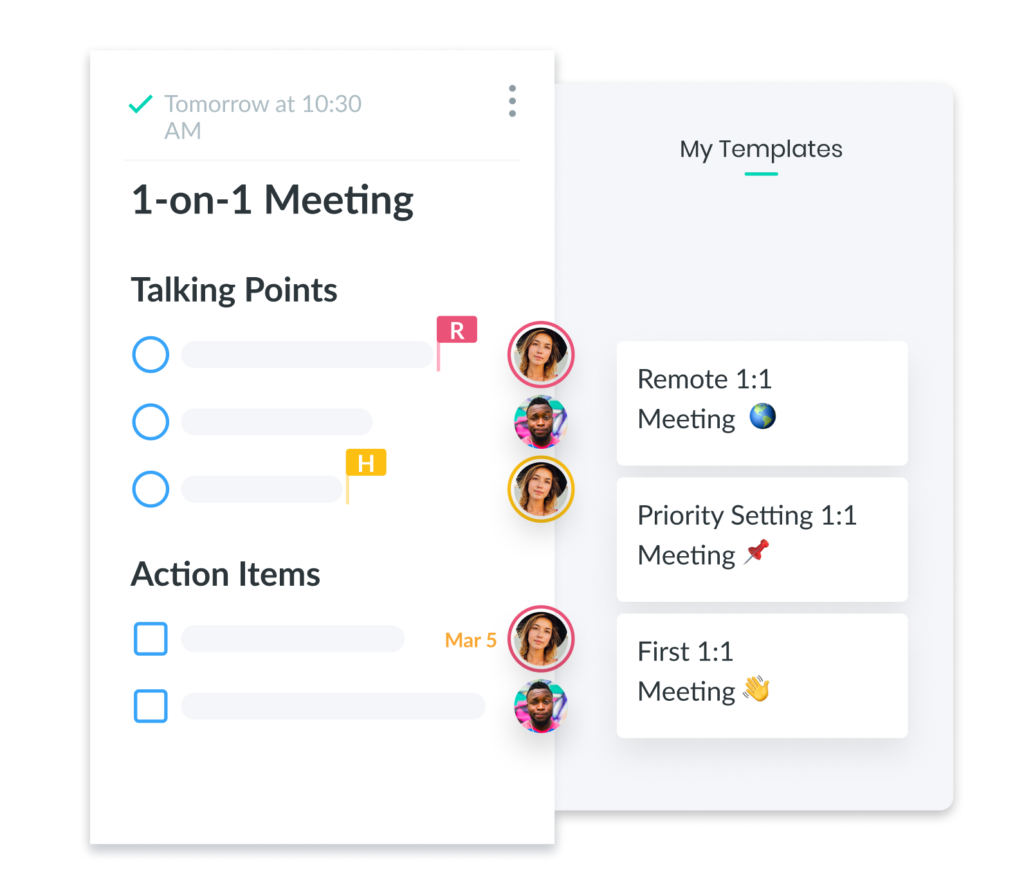
2 Identify your intent
Feedback should always come from a place of care. If you’re feeling really worked up or frustrated about a situation you want to address with an employee, consider taking some more time to cool off and digest what happened before you discuss it. The same feedback can sound totally different depending on if it comes from a place of criticism or support. It’s important to remember that the entire purpose of sharing feedback is to support and motivate your team members to improve- not to put them down and make them feel bad. Because the individual you’re meeting with may not know your intent, make it clear that you’re only bringing it up because you want to help.
3 Describe the situation
Make sure that you describe the situation in detail. Go over different approaches, scenarios and provide examples so that you can give your teammate a strong understanding of why you’re giving them feedback. The more specific you are, the better. People appreciate a straight-shooter, because it’s much more efficient and more easily understood. Make sure that after you’ve described the situation, you ask your employee if they understand or if they may need further clarification. This is also a good opportunity to let them ask questions if they haven’t fully understood the situation.
4 Focus on behaviour, not personal traits
Rather than looking at personality traits, focus on the actual behaviour and overall performance of the employee. Performance tends to outweigh personality traits and hard work is rarely confused as something else. Make sure that you’re not making judgements based on preconceptions or on the opinions of your other team members. It’s important that you make your own judgments and take the time to also listen about the situation from the employee’s point of view. Behaviour is measurable and observable, whereas personality traits are not.
5 Explain the impact
Sometimes the impact of a situation is minimal, and other times it can be quite influential to the organization. By outlining the impact of a particular situation, you can help an individual to understand why you felt the need to have a feedback meeting. Make sure that you share your own experiences and perspectives to make the employee feel more comfortable and less like you’re pointing your finger and coming from a place of criticism. At any stage of our careers, there is always room for growth and there are always learning opportunities that will propel us further into our success. Oftentimes, employees may not understand the impact, which is why they made a certain decision or acted in a certain way in the first place.
6 Suggest next steps
Make some suggestions as to what you think may be a good way to move forward. Suggesting next steps is a great way to provide actionable feedback that employees can implement. There may be some opportunities such as mentoring, training, a book, or a podcast that you think could be beneficial to your teammate. Providing them with some guidance and resources is going to help your team members feel supported and assure them that you’ve got their back. Be sure to let them know that you’re rooting for them!
7 Listen to their perspective
It’s really important that you give the floor to your employee to share their perspective and their experience. Situations are often lost in translation and if an employee is more shy or reserved, it can be very intimidating to speak up. If this is the case, help them out by asking them about their opinion. Invite them to share their thoughts on the matter and let them know that you’re all ears. Check if what you’ve discussed so far makes sense to them and ask them what they think may be an effective next step. Pay attention to non-verbal communication cues such as eye contact, facial expression and overall body language. Notice if they feel relaxed, sad, stressed out. Reciprocate your communication accordingly to make them as comfortable as possible.
8 Document the outcomes
After each of you have taken the time to go over your perspectives and ideas on next steps, you should feel like there is a common understanding and that you’re on the same page. Document what it is that you agreed on and how you may achieve the next steps that have been set out. The outcomes of the feedback meeting don’t need to be a full blown strategy, nor do they need to be written out like action items. The idea is to have a mutual agreement on how to move forward and how to check-in on the outcomes in the future. The outcome could be as simple as asking for help when a task is not clear.
If you don’t feel that you and the employee are on the same page, it may be more effective to take a break and come back to the meeting at a later time when you’ve both had some time to rethink the discussion.
9 Wrap up on a positive note
Even if you haven’t come to an agreement on the situation, you can share that you think you’ve made some progress and appreciate the honest discussion that you’ve had. You can then put the feedback meeting down as a talking point for your next one-on-one meeting. It’s a great idea to finish your feedback meeting on a positive note so that the individual leaves feeling informed, heard, motivated and supported. This way, the next feedback meeting will also be approached with some positivity. You want to avoid making anyone feel criticized or resentful about the conversation that took place.
Parting advice
Feedback meetings are going to leave your team and company feeling informed and supported. Whether you are giving positive feedback or constructive feedback, the employee should leave their one-on-one meeting feeling empowered. This type of meeting is a key component to performance management because these discussions have the power to motivate and encourage employees to work harder and feel more satisfied at work. Consider incorporating feedback meetings into your regularly scheduled one-on-one’s with your employees so that you can foster a culture of open and continuous feedback. The business results will speak for themselves!










